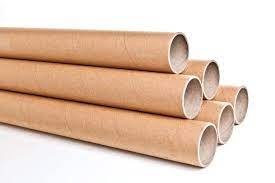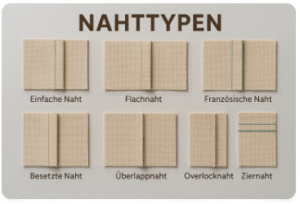
The type of paper, adhesive, and tools used to create a paper tube may affect its strength, thickness, and durability. Paper tube manufacturers recommend specific paper grades, glue types, and application methods based on the tube’s intended use, such as packaging, mailing, or industrial applications. Here are six steps to making paper tubes:
1. Select Quality Materials
Structural integrity starts with selecting paper supplies that match the tube’s intended function. Core and film cores, which support heavy materials in industrial settings, require thicker boards to maintain strength under pressure. Multi-wall construction provides moisture resistance for shipping tubes, keeping products safe. Paper grades vary in stiffness and fiber composition, which influence the tube’s load-bearing capacity. Heavier paper weights are layered in high-pressure applications to prevent collapse or deformation.
2. Cut Accurate Dimensions
Determining dimensions before cutting helps to avoid waste. Decide on your tube width and length based on your intended use. Wider paper creates longer tubes, while adding more layers makes the tube thicker. Use a metal ruler and craft knife to cut the paper to length. Measure the desired length on both sides of the paper. Align light pencil marks and trim. Precision cuts make rolling the paper around dowels smoother.
Manufacturers use trimming operations by removing uneven edges while meeting customized measurements. The purpose of each paper tube determines the end trimming, such as a square or angle, tailored to fit. Trimmed tube manufacturers’ products have finished ends and meet detailed dimension requests.
3. Prepare the Rolling Mandrel
Prepare the rolling mandrel by wrapping the prepared core with a release agent before rolling operations. Adhering to this process prevents plies from bonding to the mandrel, allowing them to be removed after drying. Insufficiently prepared mandrels can cause thinning, which weakens tubes. Paper tube manufacturers display streamlined mandrel preparation.
4. Apply Adhesive Evenly
Crew members oversee the application of adhesive to each incoming sheet to prevent dry spots. Workers adjust the adhesive viscosity according to factory conditions to achieve uniform coverage that binds paper layers without oversaturating them. The perfection of this process by tube manufacturers helps avoid adhesion failures that compromise the strength of spiral and convolute tubes.
5. Roll the Tube Securely
Roll paper layers with firm, consistent pressure on winding mandrels to increase strength. This alignment enhances the viewing of edges before moving the tubes to the next station of creation. Operators oversee the application of proper tension from the start of tube rolling to finished cores. This repeating process builds uniform tube walls.
6. Customize Your Designs
Tube customization occurs by matching the printed characters, shapes, colors, logos, and brands that surround companies for consumers to read. Coated exterior surfaces resist smudging during transit or in-store, ensuring all visuals remain legible. Welded metal or glued plastic end-closers secure contents inside mailing tubes. Tailored protective wraps shield completed tubes.
Partner With Paper Tube Manufacturers Today
Making paper tubes is a detailed process that guides the conversion of select materials into sturdy mailing and packaging containers or cores. You can learn how to trim for precision so finished products look clean and professional. Engage reliable manufacturers today.




